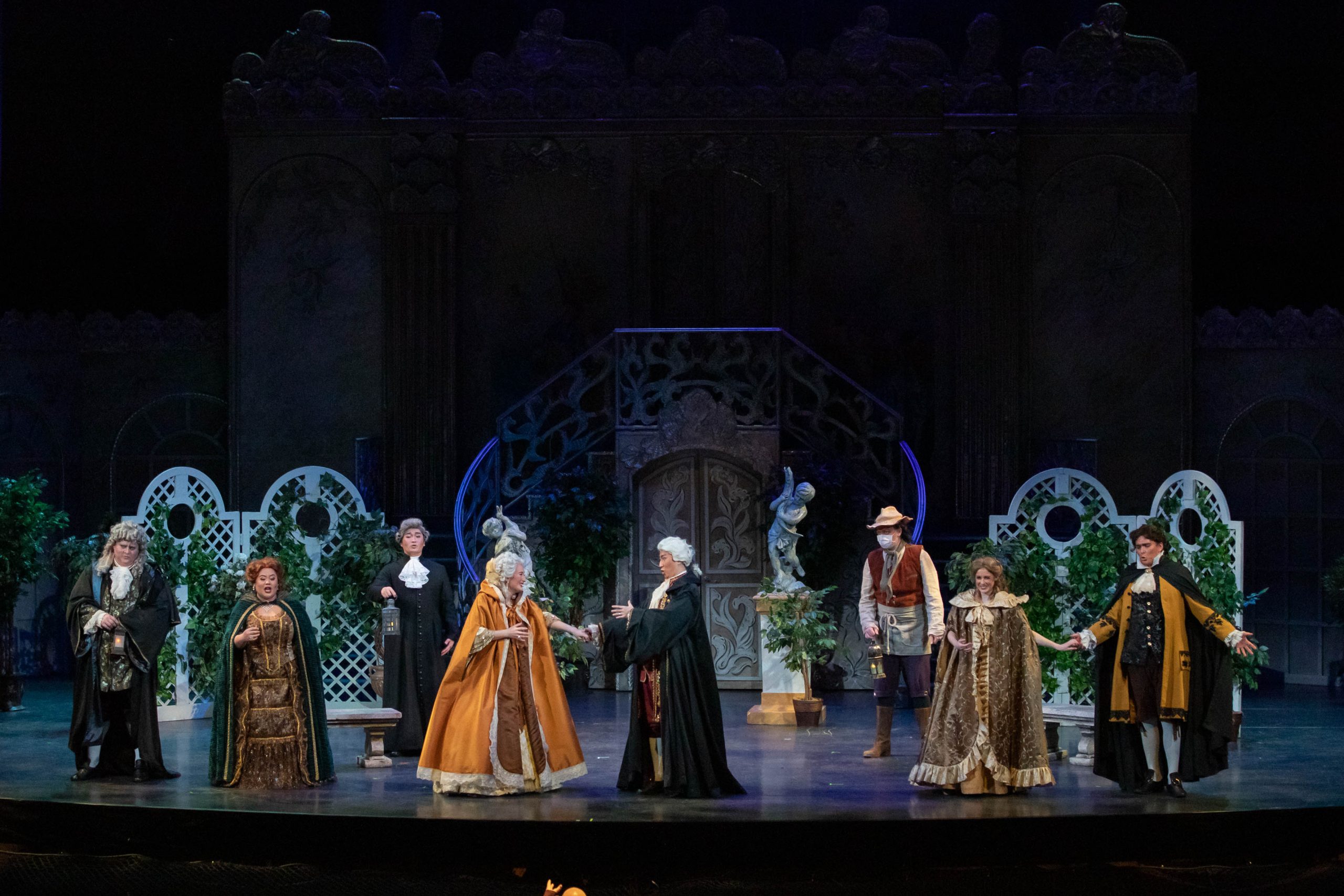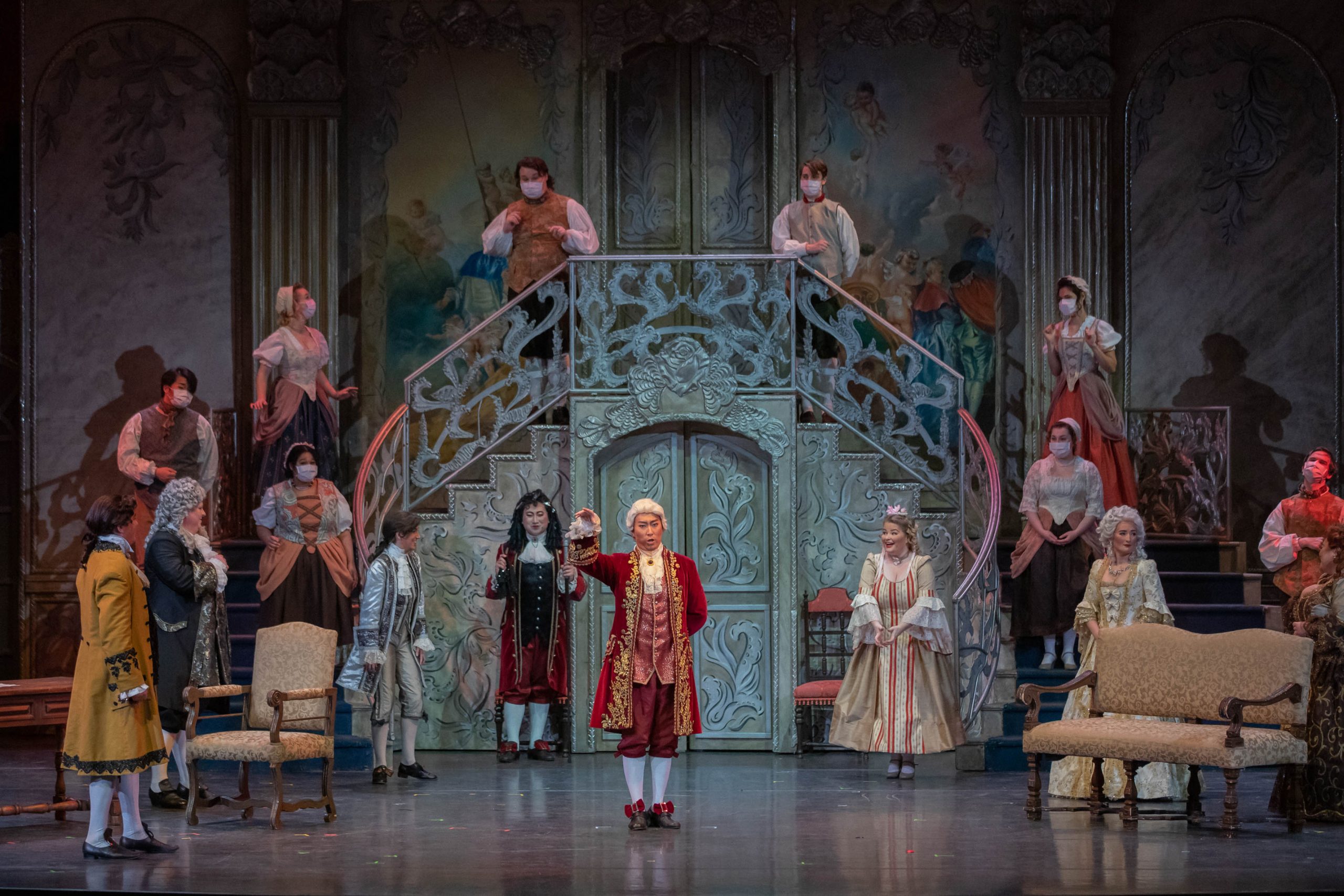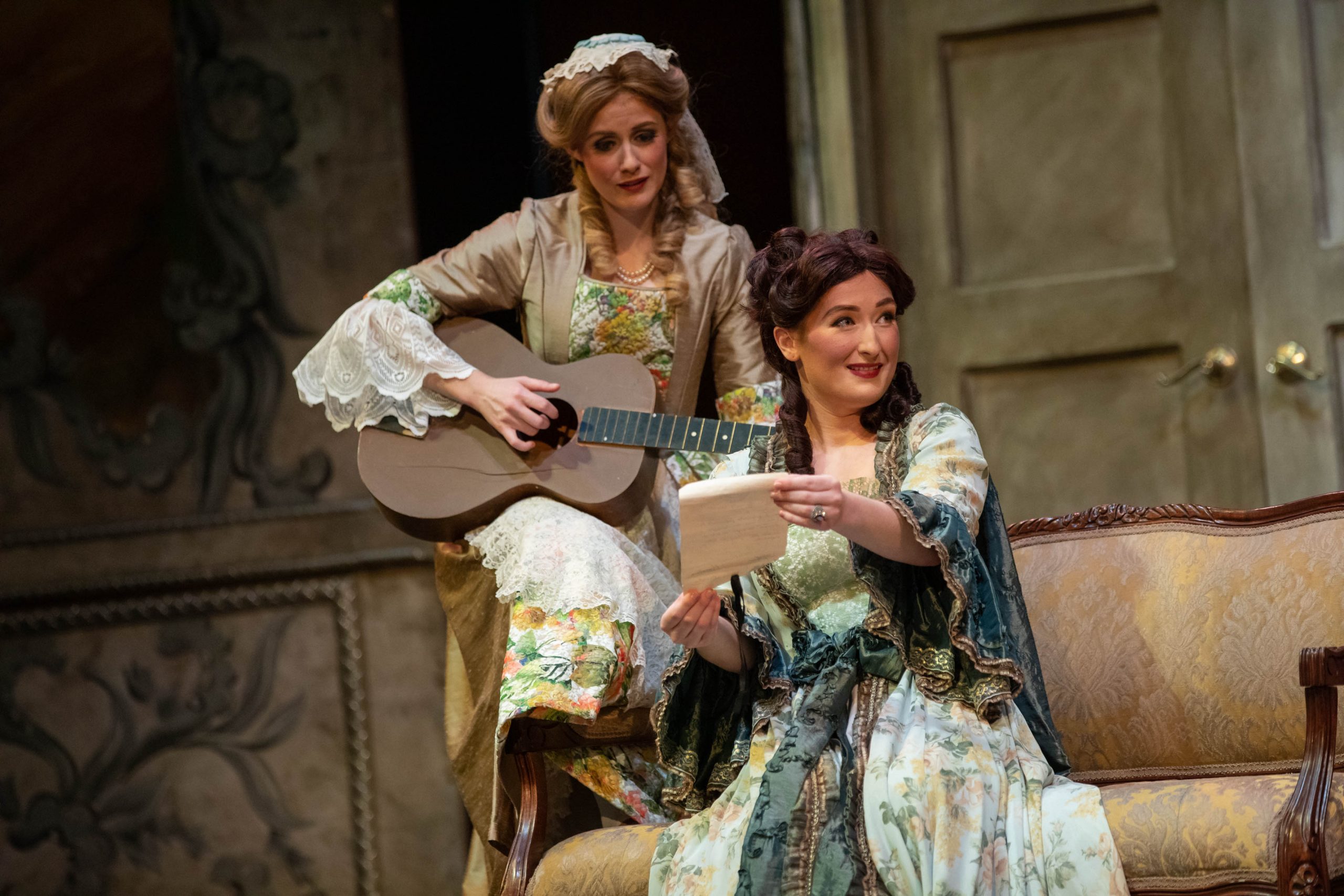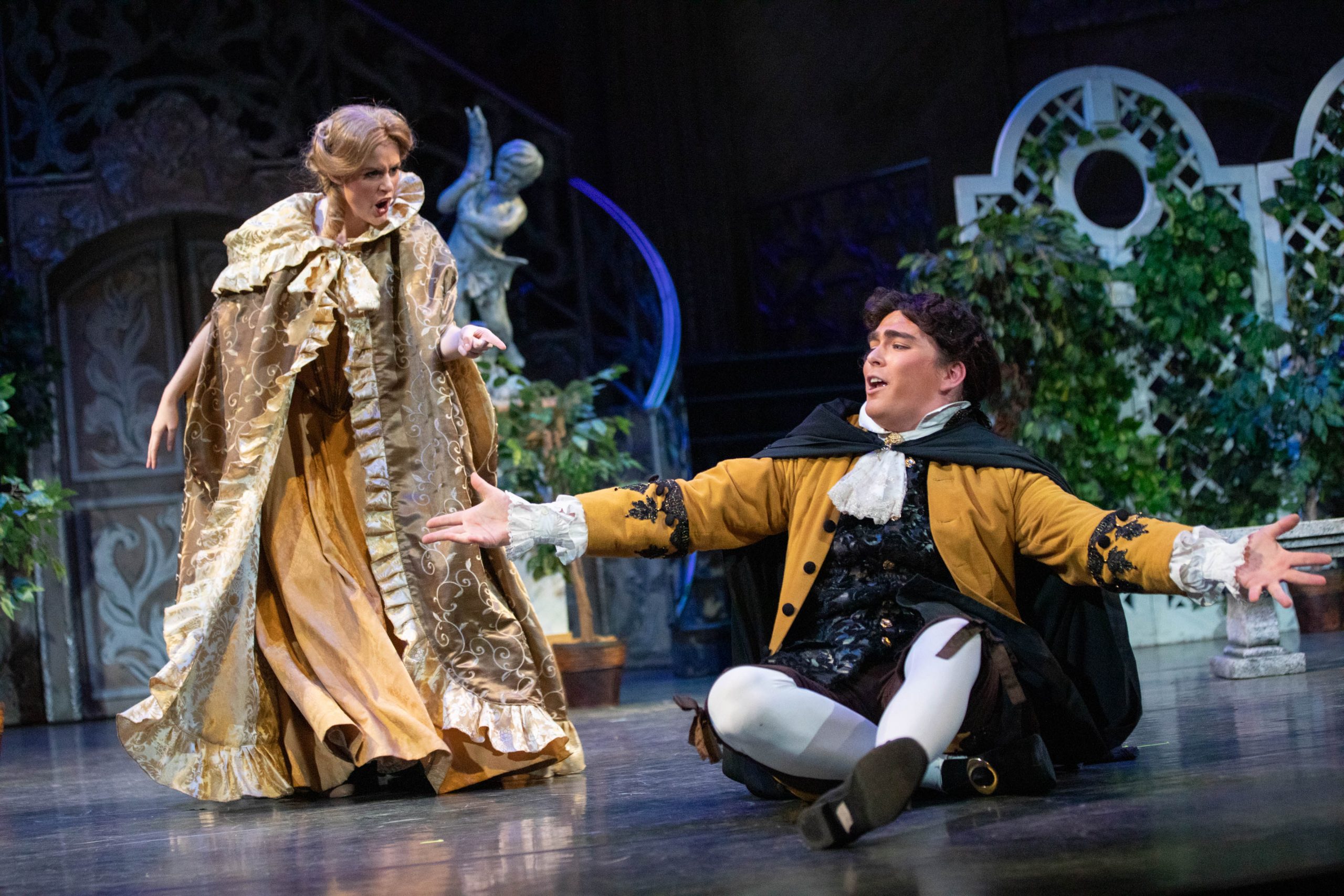If the Monty Python crew described Le nozze di Figaro as “silly—very silly,” I could hardly disagree. It’s a situation-comedy romp if ever there was one, with the situations no more profound than your basic TV sitcom. But Lorenzo da Ponte’s ingeniously tangled plot, as complex as it is hilarious, combined with Mozart’s memorably sublime music raises all the silliness to high art.
It’s a story about young people and youthful, sexually charged energy, but also about principles and what’s right, namely Figaro vowing to prevent Count Almaviva, his employer, from callously exercising his feudal “right” to bed Susanna, Figaro’s fiancée, on their wedding night. Susanna and Countess Almaviva simultaneously devise a game plan of their own to thwart the lustful Count, and this slender feminist theme, deftly embedded in the fabric of the opera, resonates today as much as it did at the Vienna premiere in 1786.
More than three hours long, Figaro must move at a clip to avoid bogging down in its own entanglements. Obviously taking this to heart, conductor Gordon Gerrard launched 20 members of the Vancouver Opera Orchestra (a frequent guest in the UBC Opera pit) into a quicksilver traversal of the opera’s tuneful overture. The experienced VOO players provided a rock-solid musical foundation for the student artists onstage, many likely singing Figaro for the first time.
The intrigue begins immediately following the overture, with plan, counterplan, mistaken identity, disguise, confusion and deception building on one another through to the “happily ever after” ending. Everyone emerges with dignity intact and no residual rancor—the latter thanks in large part to the warm compassion and capacity for forgiveness of Susanna and the Countess.
As a last-minute bonus, director Nancy Hermiston announced that the UBC Health Officer had decreed masks were no longer mandatory for the singers. Most opted to sing unmasked; as the Count, Connor Hoppenbrouwers chose to wear his, but it did not appear to mute his projection or vocal presence significantly.
It’s Figaro’s and Susanna’s story, though Count Almaviva looms large. He’s a nasty bit of work, all elegance on the outside, sheer ruthlessness within. Unafraid to portray the unlikeable side of his character, Hoppenbrouwers was a formidable Count (Feb. 3). Technically competent, he was also capable, with only a slight shift of vocal intensity, of conveying a “don’t mess with me” attitude to strike abject servility in all the underlings around him. I can see the Count becoming a signature role for Hoppenbrouwers on professional opera stages in another five or so years.
Baritone Philip Wing was the brazenly charismatic Figaro he should have been and was matched perfectly by Kathryn Rose Johnson’s perky, defiant Susanna. Allison Anderson’s noble and elegant Countess was a key figure, her “Dove sono” resonating poignantly throughout the Chan Centre’s warmly embracing acoustic.
Taryn Plater was delightfully ditzy as the hapless Cherubino, though even this lovelorn adolescent has real feelings, as her “Voi che sapete” made abundantly clear. The roles of Marcellina and Bartolo, marvellously sung by Mara Ayque and Jason Somerville, are small but pivotal since they turn out to be Figaro’s long-lost parents. The other small roles—Basilio, Antonio, Barbarina, Don Curzio and the village girls—were all more than competently filled so the performance had no weak links.
Hermiston’s direction sparkled as she corralled the singers’ youthful energy into coherent stage action without losing freshness or spontaneity. Parvin Mirhady’s elegant period costumes summoned 18th-century aristocratic Vienna and were the perfect foil to the parlors, drawing rooms and picturesque gardens of Alessia Carpoca’s evocative period sets. The Act IV garden scene staging was particularly effective. In many productions I’ve seen, characters have skulked about in plain view on a brightly lit stage with minimal scenery, pretending not to see each other and generating eyerolls among audience members unable to suspend disbelief that far. Here, under Jeremy Baxter’s subdued lighting, there was enough faux vegetation for the characters to camouflage themselves at least somewhat, making surprise encounters more believable, sudden recognitions more comprehensible.
Overall, it was a heady and thoroughly enjoyable production by a cast of young singers, many of which showed enormous career promise. Bolstered by a pit orchestra of seasoned professionals, all rose to the occasion and its challenges admirably.
Opera Canada depends on the generous contributions of its supporters to bring readers outstanding, in-depth coverage of opera in Canada and beyond. Please consider subscribing or donating today.













